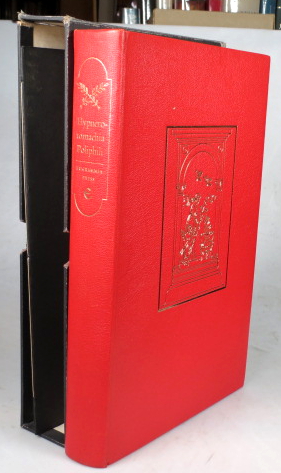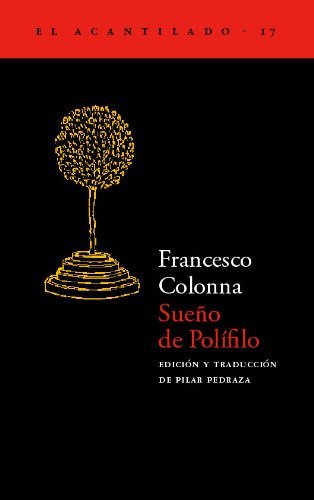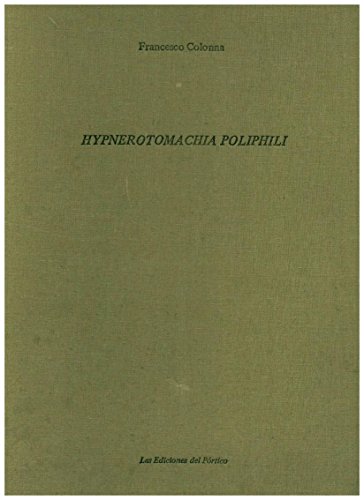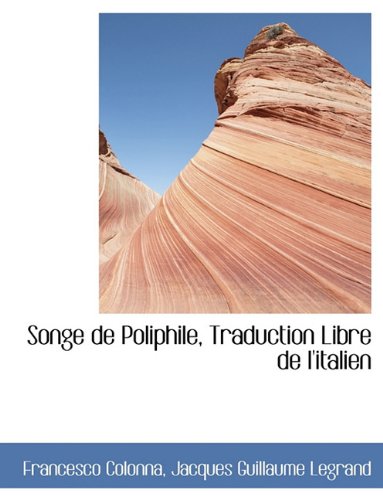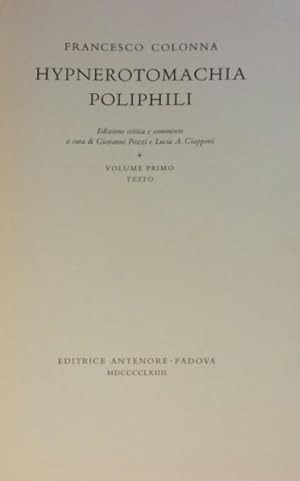francesco colonna (522 Ergebnisse)
Produktart
- Alle Produktarten
- Bücher (522)
- Magazine & Zeitschriften
- Comics
- Noten
- Kunst, Grafik & Poster
- Fotografien
- Karten
-
Manuskripte &
Papierantiquitäten
Zustand
Einband
Weitere Eigenschaften
Gratisversand
Land des Verkäufers
Verkäuferbewertung
-
HYPNEROTOMACHIA POLIPHILI
Verlag: in aedibus Aldi Manutii (Aldus Manutius) for Leonardus Crassus, Venetiis (Venice), 1499
Anbieter: Oak Knoll Books, ABAA, ILAB, NEW CASTLE, DE, USA
Erstausgabe
Aldine Press (illustrator). folio (308 x 212 mm). early limp vellum, yap edges, paper spine label with title and date. a-y8, z10, A-E8, F3. First edition of one of the most celebrated incunables, considered by many to be the most beautiful of all printed Venetian books of the Renaissance. The presumed author, Francesco Colonna, was a Dominican monk of the Zattere at Venice (the author's identity did not become evident until the 18th century when it was noticed that the 38 initials of the individual sections form the famous acrostic: "Poliam Frater Franciscus Columna Peramavit" - Brother Franciscus Columna loved Polia very much). The Hypnertomachia Poliphili was printed in Venice by Aldus Manutius in his re-cut Bembo type, which was cast by Francesco Griffo of Bologna. The book has become extremely rare in recent years and is a highly desired "masterpiece of integrated text and design, and influences designers to this day." -G. Scott Clemens. This copy is in the original setting as called for by Neil Harris (Gutenberg Jarbuch, 2006), except the last few leaves which were substituted for the 2nd edition (E1-F3). Hand-corrected letters "AM" in the second title (a1r). (Saneque en Sanequam). The phallic woodcuts 'Sacrifice to Priapus' on m6r and the woodcut on x8v, are not mutilated in this folio, unlike the majority of copies. Vellum binding lightly age-darkened, with minor spotting to the rear cover. Natural creasing to the vellum covers. The textblock has separated along the front hinge but is still attached along the spine. Rear hinge cracked between the rear cover and F3. Paper spine label chipped with some loss. Lacking the front pastedown. Title page (A1) has become separated from the textblock, but is present in this copy. The last eleven (11) leaves in this copy are from the 2nd edition (1545, France), substituted most likely during the 16th century. There are 34 (of 39) woodcut initials present, as the last five were in the last eleven leaves of the first edition. Lacking the last leaf (errata and colophon). Very minor spotting / foxing to preliminary pages. Spotting / minor dampstaining to the very top edge of q8v-r4r. Dampstaining only affecting leaves C8-D8. A small ink-spot affecting the edges of the pages around r4-r6. The preserved state of the textblock, which contains the revolutionary typography and visually-stunning wood engravings, is remarkable. Considered the "masterpiece of the classic style in Venetian illustration" (Albert Ilg, Ueber den Kunsthistorischen Werth der H. P., 1872), the tome was printed with 172 remarkable woodcuts commonly attributed to the Paduan miniature painter Benedetto Berdone (c.1455/6 - 1530). Regardless of the anonymity of the illustrator, the beauty of the engravings transport the reader into a world where Polipho's dream becomes a reality. George D. Painter, Keeper in charge of Incunabula of the British Museum, stated in the foreword of his Hypnerotomachia Poliphili of 1499 (Eugrammia Press, 1963) that "Gutenberg's Forty-Two-Line Bible of 1455 and the Hypnerotomachia of 1499 confront one another from opposite ends of the incunable period with equal and contrasting pre-eminence. The Gutenberg Bible is sombrely and sternly German, Gothic, Christian and mediaeval; the Hypnerotomachia is radiantly and graciously Italian, classic, pagan, and renascent. These are the two supreme masterpieces of the art of printing, and stand at the two poles of human endeavour and desire." The book is written in a Latinized version of Italian, offering a unique challenge to readers, as one must be near fluent in both Latin and Italian. Also contained in the text are various examples of Greek, which Manutius was very fond of, as well as early examples of Hebrew. One of the earliest documented cases of COMPLETE words in Arabic published in the entire world which can be found on the illustrated wood engraving of the three doors of the realm of Queen Telosia (h8r), perhaps one of the most important aspects about the Hypnerotomachia. This precedes the first book printed entirely in Arabic, which is The Kitab Salat al i (1514, Fano, Italy). The book contains two main stories in the text: one from our hero, Poliphilo, which was written around 1490, and one from his lover, Polia, which was written c.1467. There are numerous passages in Hebrew, Arabic, Greek, and Egyptian hieroglyphics, as well as mathematical notes, geometric and architectural construction plans, and more, perhaps inspired by Colonna's teachings of rhetoric at Treviso and Padua. A second edition published in France appeared in 1545. Kallendorf 29; Goff C-767; HC * 5501; GW 7223; ISTC ic00767000; BMC V, 561 (IB 24500); IGI 3062; Essling 1198; BSB C-471. early limp vellum, yap edges, paper spine label with title and date.
-
LA HYPNEROTOMACHIA DI POLIPHILO, CIOÈ PUGNA D'AMORE IN SOGNO. DOU'EGLI MOSTRA, CHE TUTTE LE COSE HUMANE NON SONO ALTRO CHE SOGNO: ET DOVE NARRA MOLT'ALTRE COSE DEGNE DI COGNITIONE
Verlag: in casa de' Figliuoli di Aldo, Venetia [Venice], 1545
Anbieter: Phillip J. Pirages Rare Books (ABAA), McMinnville, OR, USA
Second Printing. 310 x 212 mm. (12 1/4 x 8 3/8"). [234] leaves. Modern dark brown crushed morocco, raised bands, gilt titling to spine, gilt-ruled turn-ins, leather hinges, marbled endpapers, top edge gilt. With Aldine device on title page and final page, and 170 WOODCUTS, nine of which are full-page (count includes tablets with typeset text within, as per Mortimer). Mortimer 131; Sander 2057; Essling 1199; Adams C-2414; Kallendorf 302; Renouard 133:14; EDIT16 CNCE 12823; USTC 823513. See also: John Harthan, "The History of the Illustrated Book" pp. 80-82; and Martin Lowry, "The World of Aldus Manutius," pp. 120-25. â Title page with faint discoloration in two small marginal spots (to remove indications of ownership?), one leaf in last gathering a little browned, final three leaves (including colophon) with repair to fill small worm trail, occasional quite trivial spots to margins; in all other ways, A VERY FINE COPY--the text remarkably clean, fresh, and bright, the margins especially generous, and the binding unworn. A masterpiece of Renaissance book production, this is one of the most beautiful printed works ever created, being especially desirable for the refinement of its illustrations, extraordinary design, and thoughtful interaction of word and image. "Poliphilo's Strife of Love in a Dream," as it is often translated, is a complex allegorical romance that follows the love-sick Poliphilo as he pursues the object of his desire, Polia, through a dream world rich with architectural forms and antique splendors. Written in an unusual hybrid of Latin and Italian, the text is usually credited to the Dominican monk Francesco Colonna (1443/4-1527) due to the presence of an acrostic, formed by the first letter of each of the 38 chapters, spelling out "POLIAM FRATER FRANCISCVS COLVMNA PERAMAVIT" ["Brother Francisco Colonna desperately loved Polia"]. Though connected to the monastery of San Giovanni e Paolo, Colonna apparently lived outside the monastery walls and was something of a miscreant. Martin Lowry describes him as "a more than usually vicious character, who had twice been called before the highest authorities of his Order and once expelled from Venice on so many charges that the senior members of his community had also been held under threat. . . . [He] accused several of his superiors of sodomy, then retracted and was himself accused and convicted of seducing a young girl." Although scholars disagree about the literary merits of Colonna's erotic tale, its story and dream-world setting provided the perfect stimulus for the artistic imagination. Often arcane and mysterious, the images include ruins, obelisks, temples, and other architectural delights, strange artifacts and bits of masonry bearing inscriptions, much Christian and pagan symbolism, and various ceremonies, rituals, and processions. The artist/engraver of this work is anonymous, though the quality of the illustrations has led scholars to suggest major artists such as Andrea Mantegna, Gentile Bellini, and even Raphael as possible candidates. Recent scholarship now favors Venetian miniaturist Benedetto Bordon, based on the presence of a "b" on two of the illustrations. As Lowry notes, "the illustrator, whoever he was, produced a masterpiece which towers above any contemporary and carries the interdependence of word and picture into a new dimension. Arches, temples, vases, sculptures, inscriptions, [and] chariots were traced out as the writer had described them, not only with expertise but with a kind of zest which gave the completed whole both its brilliance and its danger." The 1499 original edition done by Aldus Manutius had been a financial disappointment (probably due to the expense of the book as well as the relatively small audience to whom it would have appealed), but the work enjoyed a renewed surge of popularity when the present 1545 reprint by Aldus' son Paulus appeared. The original wood blocks are reused in our second printing (with the exception of six that had to be recut due to damage, as per Mortimer). The earlier printing is now extravagantly expensive, and our second edition, while costly, provides a page-for-page reprint with a very much reduced price tag.
-
La Hypnerotomachia di Poliphilo, cioe pugna d'amore in sogno. Dou'egli mostra, che tutte le cose humane non sono altro che Sogno: and doue narra molt'altre cose degne di cognitione
Verlag: Venice, Sons of Aldo Manuzio, 1545, 1545
Folio (286x195 mm). Collation: [π]4, a-y8, z10, A-E8, F4. [234] leaves. Roman type. Aldine device on the title-page and verso of the last leaf. 172 woodcuts, eleven of which are full page. Blank spaces for capitals, with printed guide letters. Contemporary vellum over pasteboards with yapp edges and running stitches to spine. Smooth spine with title and date inked in black. A very good copy. First quire slightly browned. A few marginal fingermarks, pale waterstain to the upper corners of fols. a2 and a3. Minor foxing. more prominent on first two quires and the margins and woodcuts of fols. k8, l1r, and l2. Small repair to lower inner corners of fols. a1v and a2r, and to fol. E1r, without any loss; larger repair to fol. a4, affecting some letters on the recto and verso; Some bibliographic notes in pencil on the front and rear pastedowns.The rare second edition of the Poliphilo, the most famous illustrated book of the Renaissance. The first edition was printed by Aldus Manutius in 1499 (see no. 43), and the new printing of 1545 suggests a renewed interest in the work, in Italy as well as abroad, for within a year a French translation also appeared, followed by an English translation in 1592. The second edition is a page-for-page reprint: the book was printed by Aldus' heirs employing the same woodblocks as the 1499 edition, with the exception of seven that were either broken or missing. The redesigned and newly cut woodcuts are found on fols. b4v, b5r, e2v, e5r, o3v, q5v, and x2r. The text was set in a different roman type. "A single roman type has been used in a single body, although in 1545 the current state of typography offered the possibility of differentiation on roman and italic (both letter forms had small capitals). But there is a major difference: where there were printed initials in 1499 [.] here, in 1545, the printer has left open blank spaces, in which a guide letter has been printed for the illuminator who could then paint in a beautiful initial by the buyer's order [.] this means that the son of Aldus [Paulus Manutius] felt that the market for this book was with affluent bibliophiles: he produced an edition intended to be transformed into a deluxe copy by the buyer. What is special is that in 1545 this fashion had all but passed, so that this edition may be termed an anacronism" (F. A. Janssen, "The Typographical Design of the 'Poliphilus' (1499-1600)", p. 69). Further, in 1545 the title of the book was here translated into Italian as La Hypnerotomachia di Poliphilo, with the added phrase Dov'egli mostra, che tutte le cose humane non sono altro che Sogno, the author demonstrating in his book "that all human things are nothing but a dream". Adams C-2414; Mortimer Italian, 131; Renouard Alde, 133.14; Ahmanson-Murphy 335; L. Donati, "Di una copia tra le figure del Polifilo (1499) ed altre osservazioni", La Bibliofilia, 64 (1962), pp. 163-183; G. Mardersteig, "Osservazioni tipografiche sul Polifilo nelle edizioni del 1499 e 1545", Contributi alla storia del libro italiano. Miscellanea in onore di Lamberto Donati, Firenze 1969, pp. 221-242; F. A. Janssen, "The Typographical Design of the 'Poliphilus' (1499-1600)", Idem, Technique and Design in the History of Printing, 't Goy-Houten 2004, pp. 57-74; Philobiblon, One Thousand Years of Bibliophily, no. 103. Book.
-
Poliphili hypnerotomachia, ubi humana omnia non nisi somnium esse ostendit, atque obiter plurima scitu sane quam digna commemorat [La hypnerotomachia di Poliphilo, cioè pugna d'amore in sogno].
Verlag: Venice, [heirs of Aldus], 1545., 1545
Anbieter: Bernard Quaritch Ltd ABA ILAB, London, Vereinigtes Königreich
Signiert
Folio (c.303 x 201mm), ff.[230 (of 234)]; a y8, z10, A E8, F4; 170 woodcuts in text, of which 9 full-page (the Priapic woodcut uncensored); woodcut Aldine device to verso of last leaf; n1v and n8r transposed (as in the first edition); bound without preliminary section [*]1 4; f.a1 very lightly foxed, but a very good, broad-margined copy, very lightly washed, bound in nineteenth-century polished calf, boards panelled in gilt, spine gilt-ruled in compartments, one lettered directly in gilt; a few scuffs; copper-engraved armorial bookplate (by Agry) of the family Nuñez del Castillo, marquesses de San Felipe y Santiago, to upper pastedown; twentieth-century bookseller's ticket of Arthur Lauria to front free endpaper.Second edition, scarcer than the first (also an Aldine, published in 1499), of the most beautiful illustrated books printed in Italy in the fifteenth century. Known for its fine woodcut illustrations, mysterious meanings, and the cryptic inclusion of Colonna's name, the Hypnerotomachia has been celebrated as the finest example of early Venetian printing.'It is not easy to sum up in a few words the artistic and literary interest of the book. The woodcuts, one of which is signed "b" have been ascribed, as Pollard says, with no good reason to a dozen artists including Bellini. What is clear is that the artist who designed them was influenced by the work of Bellini, Carpaccio and perhaps Botticelli. They have a unique perfection and all that can be said with certainty is that the same hand may be traced in some other contemporary woodcuts. Why Aldus published this book is a mystery since he was mainly interested in producing editions of the Greek and Latin classics. In any case it was an expensive failure, for in 1508 he complains that nearly the whole edition was unsold and it was left to later generations of book collectors to appreciate it. Nevertheless, it was re-printed in 1545, published three times in French and translated into English in a botched version in 1592 under the title Hypnerotomachia or the Strife of Love in a Dream. It is a curious work written in a language which is a mixture of Latin and Italian [interspersed with Greek and Hebrew words], and briefly can be described as a Renaissance monk's dream of the ancient world. "Poliphilo, the hero and lover of Polia, falls asleep and in his dream and pursuit of Polia sees many antiquities worthy of remembrance and describes them in appropriate terms with elegant style" to quote the words of the preface' (J.Irving Davis). Nowadays the woodcuts are widely considered to be the work of Benedetto Bordone (1460 1531), a successful miniaturist active in Venice, turned cartographer and prolific designer of woodcuts later in life.'The illustration follows two themes, cuts relating to the story content of the dream and representations of ancient architecture, inscriptions, and triumphal processions observed by the dreamer and described in detail in the text' (Ruth Mortimer, Italian 16th-century books, no.131). The woodcuts of this edition are from the original blocks of the first edition, except for the six blocks on leaves b4v, b5r (two), e2v, e5r and x2r which were recut according to Ruth Mortimer. In fact, with the further exception of the first title being different, and the errata leaf at end not existing (the errors having been corrected) but its place taken by the register and colophon instead, it is a page-for-page reprint of the 1499 edition. The removal from the present copy of the title was perhaps a somewhat naive attempt to disguise this second edition as the first. 'The author, Francesco Colonna (Latinized, Franciscus Columna) was a Dominican monk in the monastery of S.S.Giovanni e Paolo, who died in Venice, where he had lived the greater part of his life, in 1525 (or 1527) at a very advanced age. The last leaf in the book before the errata leaf [in the second edition, before the colophon], purposely hides the real author under the name "Poliphilus" but tells us the fact that the writing of the book was completed by said "wretched" ("misellus") lover, at Treviso in May, 1467. It is on taking the first letter of each of the 38 chapters in succession, a device often resorted to in the fifteenth and sixteenth centuries, that we discover his identity in the phrase, "Poliam Frater Franciscus Columna Peramavit." The identity of Polia, if she ever lived in real life, has never been established' (Hofer, Variant copies of the 1499 Poliphilus, New York, NYPL, 1932, pp.3 4). Adams C2414; J.Irving Davis 85; EDIT16 12823; Essling 1199; Mortimer 131; Renouard 1545 14 (pp.133 134); Sander 2057. Language: Italian.
-
Verlag: Paris, Jacques Kerver à la Licorne, 1561., 1561
Anbieter: Librairie Camille Sourget, Paris, Frankreich
Verbandsmitglied: ILAB
Couverture rigide. Zustand: Très bon. ?The most important of the three editions given by Kerver of the first translation by Jean Martin, of the most beautiful and most famous Italian book of the Renaissance, published in Venice in 1499 by Aldus.? (Pierre Berès). Brunet, IV, 779 ; Harvard, French, n°147 ; Jean Martin, Un traducteur au temps de François Ier et de Henri II (Cahiers V.-L, Saulnier, 16), Paris, 1999 ; D. Cordellier, Luca Penni, un disciple de Raphael à Fontainebleau, Paris, 2012, pp. 111-113. It is illustrated with 181 woodcuts including 13 full-page. The illustration of the beautiful engraved title was recently attributed by Dominique Cordellier to Luca Penni. The figures take over some of the woodcuts from Aldus? edition adapting them. ?It?s thus a book slightly different from the original that is offered to the public. that is interested in Antiquity, architecture, palaces and gardens. Forgetting that the Poliphili is a romantic novel, most of the readers from the 16th century will use it to find architecture models?. (Martine Furno, notice du CESR). This extraordinary romantic novel is one of the most significant of Renaissance literature. The work is dedicated to the count of Nanteuril de Hardouyn, Henri de Lenoncourt, governor of Valois by the translator Jean Martin. Thus, the book became specifically French, the translator himself mentioning that he has worked from an ?Italian language mixed with Greek and Latin?. The text, that became famous thanks to the beautiful edition printed by the Aldus in 1499, is of the utmost interest and can justly be seen as one of the leaders of fictional novels. Brilliantly printed by Marin Masselin, this edition is the last one and the most important of the three given by Kerver. The figures are the same as in the first French edition given by the same editor in 1546; only one was changed: the one, full-page, on leaf B6 v°, showing an antique door with columns with inspired Doric capitals and flirting with the composite style. This is the sign of a clearly visible architectural preoccupation. In the 1546 French edition, as in the Aldus one of 1499, this engraving would not show the columns capitals and would copy a rough drawing, cluttered with comments replicating writings and numbers. ?This edition presents, as the one from 1554 that preceded it, a very interesting variation compared to the first French edition of 1546. Substituting the March 8th 1543 privilege of the 1546 edition, the back of the title contains a preliminary leaf, curiously written in Latin, signed by Jacques Gohory, 1520-1576, from an old Tuscan family. Close to the Pleiades and to Antoine de Baïf?s circle, Gohory devoted himself to the study of poetry, music, chemistry, natural history, philosophy, medicine, after having been charged of missions in Flanders, England and Rome. He was responsible for the creation of a private academy, the « Lyceum philosophal », that competed with Baïf?s Royal Academy of poetry, founded two years before, and also the French translation of many Latin, Italian or Spanish texts. This note, that appeared for the first time in the 1554 edition published the day after Jean Martin?s death, and that can be found in any later edition, confirms the indication given by Martin in his introduction of the acrostic formed by the first letters of every chapter, that gives the key of the authorship of this work : Poliam Prater Franciscus Columna Peramavit (Brother François Colonna languished for Polia). In his dedication to Henri de Lenoncourt, his protector, and in his notice to the reader, Jean Martin mentions that a translation made by a virtuous gentleman was given to him by a friend so he could revise it; he adds that he regrets that the Italian text was not directly translated by Nicolas Herberey. In his note, Jacques Gohory identifies himself as the friend who gave the work to Jean Martin, after a certain knight of Malta made a draft version of it. He was said to be the dedicatee?s brother, Cardinal Robert de Lenoncour.
-
LA HYPNEROTOMACHIE OU DISCOURS DU SONGE POLIPHILE.
Verlag: A PARIS L. Blaublom pour Jaques Kerver aux deux Cochetz Rue S. Jaques, 1546
Anbieter: Roger Middleton P.B.F.A., Oxford, Vereinigtes Königreich
Verbandsmitglied: PBFA
FIRST FRENCH EDITION 1546. Translated from the Italian. Folio in sixes, approximately 345 x 215 mm, 13½ x 8¼ inches, 181 woodcuts of various sizes, 13 full page, large arabesque initials, leaves: [vi], 1-157, [1] (numbered on rectos only), the initials "M" on leaf C6 recto and "F" on leaf D3 verso, were originally printed from crible blocks but arabesque initials have been tipped in over them, modern full morocco binding, gilt lettering to spine and upper cover, blind floral decoration between raised bands to spine, tiny gilt fish to centre of lower cover, blind decoration to covers, new cream endpapers, housed in a slipcase of marbled paper covered board with leather surround at opening. TITLE PAGE AND LAST PAGE (COLOPHON), ARE VERY GOOD FACSIMILES ON OLD PAPER (a pencil note on first pastedown states that it was purchased from Quaritch, London booksellers, in 1977, and that the facsimiles were done in line block and the new endpapers were Kelmscott paper). The first prelim has a small neat repair to lower corner, last page of prelims has outer margins neatly repaired, not affecting text, page 1 has a small neat repair to top margin, not affecting image or text, a few margin edges at front and rear have tiny closed tears neatly repaired, shallow creasing to pages throughout, mostly affecting lower margins, pale ink splash to one lower margin, not near text, pale staining to some margins, one just touching image, occasional neat early old ink marginalia and name to margins, one image has a neat name and note in blank area, last endpaper, probably original, is dusty and has part of outer margin neatly repaired, 2 pieces of paper stuck to first pastedown with relevant notes, some occasional foxing and some handling signs to margins, a small pale curious face on last page with name below in early hand, otherwise a very good copy. See: Alchemy and the Occult. A Catalogueof Books and Manuscripts from the Collection of Paul and Mary Mellon, given to Yale University Library, Volume 1, page 15-19; Harvard Library Catalogue of Books and Manuscripts, Volume 1, Part 1: French 16th Century Books, page 179, No. 145 for detailed description; Short-title Catalogue of books in France and of French books printed in other countries from 1470-1600 now in the British Museum, page 119; Brunet, Volume iv, page 778; Catalogue of Early French Books in the Library of C. Fairfax Murray, page 99-101; Art of the Printed Book 1455-1955, Masterpieces of Typography through 5 centuries in the Pierpont Morgan Library New York, page 11 and plates 30, 31 and 54. The author's name is found only by the large initial letters beginning each chapter, these read from the beginning of the book to the end: POLIAM FRATER FRANCISCVS COLVMNA PERAMAVIT. Francesco Colonna (1433/1434-1527) was a learned Italian Dominican priest credited with the authorship of the Hypnerotomachia Poliphili by an acrostic in the text. The story takes the form of an arcane allegory in which Poliphilo pursues his love Polia through a dreamlike landscape, and is, seemingly, at last reconciled with her by the Fountain of Venus. There are frequent references to classical geography and mythology, mostly by way of comparison and the illustrations show scenery, architectural settings, some of the adventures and some of the characters and animals Poliphilo meets in his dreams. MORE IMAGES ATTACHED TO THIS LISTING, ALL ZOOMABLE, FURTHER IMAGES ON REQUEST. POSTAGE AT COST.
-
[HYPNEROTOMACHIA POLIPHILI] LE SONGE DE POLIPHILE. OU HYPNERTOMACHIE de Frère Francesco Colonna, Littéralament traduit pour la première fois, avec une Introduction et des Notes par Claudius Popelin.
Verlag: Paris Isidore Liseux 1883, 1883
Anbieter: Buddenbrooks, Inc., Newburyport, MA, USA
Erstausgabe
2 volumes. FIRST PRINTING OF THIS IMPORTANT LIMITED EDITION, one of only 400 copies on Hollande paper of a total edition of only 410. With a great profusion of illustrations throughout the text being woodcuts after those first issued in the original first edition of 1499 now re-engraved by A. Prunaire. Large 8vo, very handsomely bound in contemporary three-quarter brown morocco over marbled boards, the spines with wide raised bands ruled in blind, two compartments with gilt lettering, marbled endpapers. ccxxxvii, 379; 458 pp. A very handsome set, the bindings very attractive and in fine shape with just a little rubbing at the extremities, the text all fine but for the lightest of spotting to which the Hollande paper is prone, in this case it is very minor. A VERY SCARCE AND BEAUTIFUL EDITION OF COLONNA'S GREAT ROMANCE, THE DREAM OF POLIPHILI, THE MOST MAGNIFICENT AND SERENELY BEAUTIFUL ILLUSTRATED BOOK OF THE ITALIAN RENAISSANCE. With scholarly notes and a long and very fine introduction and translation Claude Popelin. One of the great works of the early Renaissance, Hypnerotomachia Poliphili presents a mysterious arcane allegory in which the main protagonist, Poliphilo pursues his love, Polia, through a dreamlike landscape. In the end, he is reconciled with her by the "Fountain of Venus". The original edition, published in 1499, has long been sought after as one of the most beautiful incunabula printed. Here we see that tradition of the printer's craftsmanship brought to the modern period with woodcuts skillfully copied from French editions dating back to 1546. The illustrations were so striking for their time that the HYPNEROTOMACHIA served as a sort of pattern-book, influencing book illustration styles all over Europe. For some time, attribution of the illustrations was made to Giovanni Bellini (ca. 1430-1516) or to Raffaello Sanzio (1483-1520) but it is a fact of course, that present scholarship can only conjecture as to the true artist. "[A]rtists.craftsmen.decorators got hold of this incomparable album of compositins in the antique taste. In the countries beyond the Alps its repercussions are even more clearly traceable than in Italy itself, where a greater variety of other sources for the study of clasical forms were to be found. In the north an astonishing proportion of all Renaissance ornament and accessory design can clearly be proved to derive from Colonna s POLIPHILO" (E.P. Goldschmidt, The Printed Bookof the Renaissance, 1950, 52). The text, attributed to "Franciscus Columna" is based on the fact that the woodcut initials form an acrostic of his name, is a blending of the courtly romance of the Middle Ages with the revival of classical culture. It has recently been argued that the hidden autor was not the traditional candidate but rather the Servite friar Eliseo da Treviso (fl. 145-1506): see two articles by Piero Scapecchi in "Accademie e bibloteche d Italia, 1983: 286sqq. and 1985: 68 sqq. This revised opinion is not strongly grounded however. Collona s authorship is implied by several contemporary evidences. The aforementioned acrostic (POLIAM FRATER FRANCISVS COLCMNA PERAMAVIT), the unique setting of the first sheet ( l.4) of HYPNEROTOMACHIA preserved in a Berlin copy (presumably a rare cancellandum) contains Italian verse by on Matteo Visconti of Brescia refering more openly to ".Francisco alta columna l Per cui phama imortal de voi [scil. Polia, and Visconti s own loved one Laurea] rissona." Finally, an act of the Dominican order; of 5 June 1501,instructed that Francesco Colonna should be compelled to repay expenses which the Provincial of the Order had incurred "on account of the printed book." George Painter, in his fascinating essay, gives an appropriate context to the book: "Gutenberg's Forty-two-Line Bible of 1455 and the HYPNEROTOMACHIA of 1499 confront one another from opposite ends of the incunable period with equal and contrasting pre-eminence. The Gutenberg Bible is somberly and sternly German, gothic, Christian, and medieval; the HYPNEROTOMACHIA is radiantly and graciously Italian, classic, pagan, and renascent. These are the two supreme masterpieces of the art of printing, and stand at the two poles of human endeavour and desire." The text, attributed to "Franciscus Colonna", is a blending of the courtly romance of the Middle Ages with the revival of classical culture. In search of his lost love, Polia, Polifilo is carried through a dream-world of pyramids and obelisks, ruined temples, bacchanalian festivals, and other classical scenes before finding her and attaining enlightenment at the temple of Venus. It "teaches that all human existence is no more than a dream, and along the way records many things most worthy of knowledge.".
-
Les Principes de la nature, suivant les opinions des anciens philosophes, avec un abrégé de leurs sentimens sur la compositions des corps : ou l'on fait voir que toutes les opinions sur ces principes, peuvent se réduire aux deux sectes, des atomistes et des académiciens.
Verlag: André Cailleau, Paris, 1725
Erstausgabe
2 vol. in-12 de(2-XLVIII-284 pp. et [2]-336 pp. COLONNA (Francesco Maria Pompeo). Les principes de la nature ou de la génération des choses. Paris, André Cailleau, 1731. In-12 23-336 pp. Ensemble 3 vol. in-12, veau marbré havane, dos lisse richement orné, pièces de titre en maroquin rouge et de tomaison en maroquin brun, tranches marbrées (reliure de l'époque). 1 - Édition originale. Célèbre alchimiste italien (1649-1726), philosophe hermétique, ami et disciple du comte de Boulainvilliers, « il allie une information scientifique toute moderne à des formes de pensées archaïques. Sa conception de la nature toute puissante n'est pas dans l'ordre visible des choses mais dans la puissance de l'esprit créateur dont le monde est animé fait de lui un héritier du naturalisme de la Renaissance. Mais c'est surtout à la doctrine alchimiste qu'il emprunte ses idées et ses arguments. La nature est définie comme principe même de la fécondité, la génération en étant la manifestation. Il peut être considéré comme un des précurseur de Diderot » (M. J. Ehrard, Matérialisme et naturalisme : Les Sources occultistes de la pensée de Diderot). Caillet, I, 2509. 2 - Édition originale. Ouvrage posthume publié par son disciple et ami Augustin Gosmond. Celui-ci reprend en préambule la polémique entre le Père Castel et Colonna au sujet de la composition de la matière. Le plan choisi par Colonna souligne l'uniformité des trois règnes : Première partie : Des végétaux ; Deuxième partie : De la génération des animaux et troisième partie : De la génération des minéraux. Bel exemplaire. Caillet I, 2510.
-
[Bodoni] Songe de Poliphile, Vol I - II
Verlag: Bodoni, Parma, 1811
Anbieter: Leopolis, Kraków, Polen
Buch
Hardcover. Zustand: Very Good. 2 volumes 4to, XI, 190 pp; [4], 198 pp. Untrimmed in publisher's orange boards (boards slightly foxed, some foxing inside). Rare Bodoni rendering of Hypnerotomachia, loosely translated by J. G. Legrand (the first edition was printed by Didot in 1804). Limited to 300 copies. Brooks 1103; Brunet IV, 779 (belle édition).
-
Hypnerotomachia Poliphili.
Verlag: London: Eugrammia Press, 1963
Anbieter: Wissenschaftliches Antiquariat Zorn, Marburg, Deutschland
Buch Erstausgabe
Unpaginiert (ohne Seitenzählung) ca. 472 Seiten mit 172 s/w Abbildungen. Gutes Exemplar mit nur leichten Gebrauchsspuren. Textsauber und aus einem Nichtraucherhaushalt. Dieses Exemplar ist ein Nachdruck der Originalausgabe von 1499, die in Venedig veröffentlicht wurde. Es enthält zwei beiliegende Werbeblätter zur Ausgabe in deutscher und englischer Sprache (Der Traum des Poliphilus geschrieben von dem Dominikaner Francesco Colonna, gedruckt in Venedig 1499 bei Aldus Manutius, mit 172 Holzschnitten und vielen schönen Initialen). Dieses Exemplar wurde in einer limitierten Auflage von 315 Stück gedruckt. Dieses Exemplar stammt aus der Bibliothek von Peter Amelung (Württembergische Landesbibliothek Stuttgart). // Original hardcover. Clean book in good condition. Book from a non smoking environment. This copy is a reprint of the original edition published in Venice in 1499. It includes two accompanying promotional leaflets in German and English (The allegorical and architectural romance by the Dominican Friar, Francesco Colonna, printed in Venice in 1499 by Aldus Manutius, containing 172 woodcuts and numerous fine floriated initials). This copy was printed in a limited edition of 315 pieces. Book with 172 b/w illustrations. This copy originates from the library of Peter Amelung (Württemberg State Library Stuttgart). Sprache: Italienisch Großformat, Original-Leinenband mit Kopfgoldschnitt.
-
Hypnerotomachia Poliphili
Verlag: Padova: Antenore, 1964
Anbieter: Libreria Emiliana snc, Venezia, VE, Italien
Legatura editoriale. 20mo secolo.
-
Les Secrets les plus cachés de la philosophie des Anciens
Verlag: d'Houry, 1722
Anbieter: La Fontaine d'Aréthuse, GENTILLY, Frankreich
Livre relié. Zustand: Etat moyen. Paris, d'Houry, 1722, in-12, pleine basane de l'époque, dos à nerfs, orné, XVI, 336 pp. Une ancienne et pâle trace de mouillure marginale affecte 15 feuillets. Fort rare édition originale ornée de 3 figures sur bois. Dorbon 827. Caillet 2511: « François-Marie-Pompée Colonna était le fils naturel d'un prince de Gallicano, membre de l'illustre famille des Colonna. Il naquit vers 1649 et mourut à Paris en 1726. Célèbre alchimiste, il périt dans un incendie de la maison qu'il habitait. Ces secrets d'alchimie sont encadrés dans un récit analysé avec éloges dans le Journal des savants, 1723 (pp. 112-115). » Distillation des Plantes, des Métaux, etc. Composition de la Pierre Philosophale. Semences métalliques. Manière d'extraire les Essences Séminales des Corps des Trois Règnes de la Nature, pour la Médecine. Médecine universelle contre toutes sortes de Maladies. Mercure et Or Philosophiques. Enigmes et Paraboles des Philosophes. Etc. Ferguson II/15. Un cachet de la Société Théosophique de Prague au bas de trois feuillets. Provenance Bibliothèque Chacornac (étiquette contrecollée).
-
Hypnerotomachia Poliphili, Ubi Humana Omnia Non Nisi Somnium Esse Ostendit. Faksimile des Druckes GW 7223.
Verlag: London Methuen & Co, 1904
Anbieter: Versandantiquariat Christine Laist, Seeheim-Jugenheim, Deutschland
O-Interims-Pappband mit Leinenrücken und montiertem Titelschild, Einband und Rücken mit Gebrauchsspuren, 1. und 2. Blatt etwas gebräunt, restliche Seiten sauber, 234 unpaginierte unbeschnittene Büttenpapierblätter mit Text und 170 Holzschnitten. Zwei heraustrennbare Blätter mit dem Druck von zwei, für das Jahr 1904, anstößigen Darstellungen. Miteingebunden ist ein zweites Titelrückenschild, 4°. Gewicht: 2,8 kg. - - - Eine heutige Ansicht geht davon aus, dass es sich bei der Hypnerotomachia Poliphili um eine codierte Botschaft handelt und der Drucker des Werkes auch gleichzeitig der Autor gewesen ist. - - - Das Originalwerk wurde von Aldus Manutius im Dezember 1499 in Venedig gedruckt.
-
Songe de Poliphile ou Hypnetoromachie de Frère Francesco Colonna (2 Tomes - Complet)
Verlag: Isidore Liseux, 1883
Anbieter: Librairie du Cardinal, GRADIGNAN, Frankreich
Erstausgabe
rigide. Littéralement traduit pour la première fois, avec une Introduction et des Notes par Claudius Popelin, Figures sur bois gravées à nouveau par A. Prunaire, tirage à 410 exemplaires, un des 400 exemplaires sur papier de hollande (n° 60), 1 vol. fort in-8 reliure demi-chagrin brun, dos à 5 nerfs orné, Isidore Liseux, Paris, s.d. [1883 ], CCXL-379 pp. ; 458 pp. et 1 f. n. ch. Bon exemplaire de ce beau tirage sur hollande de la première traduction française du "Songe de Poliphile". L'un des plus beaux et des plus fameux livres du monde, "l'Hypnerotomachia Poliphili" eut une immense influence sur les lettrés des XVIe (Rabelais s'en inspire plusieurs fois) et XVIIe siècle, et continue à passionner historiens, architectes, philosophes ou penseurs (tel Carl Gustav Jung). Bon exemplaire (dos très lég. frotté, rares rouss. sur tranches, bel état par ailleurs, ex-libris Robert et Romand Thibaut). Vicaire, II, 919 Langue: Français.
-
LE SONGE DE POLIPHILE, OU, HYPNÉROTOMACHIE [2 VOLUMES]
Verlag: Isidore Liseux, Paris, 1883
Anbieter: Second Story Books, ABAA, Rockville, MD, USA
Hardcover. Limited edition. Octavo; 2 volumes; Limited edition 120/410; Fair+; Hardcover; Spine, red with gold print, raised bands; Boards half bound with red leather to spine and corners and marbled paper to boards, mild wear to spine caps and corners, light rubbing, else clean and strong; Text blocks have spotting to edges, bookplate on front pastedowns, light tanning to endpapers, slight occasional foxing, penciled underlining and marginal notation throughout, puckering to paper throughout; 2 vols. (ccxxxv, 379 pages; 458 pages, illustrated (b&w). [Oversized book(s). Additional postage necessary for expedited/international orders. Economy International shipping unavailable due to weight restrictions. For international/expedited customers, please inquire for rates] NOTE: Shelved in Room G. 1354505. Special Collections.
-
Les secrets les plus cachés de la philosophie des anciens, decouverts et expliques, a la suite d une Histoire des plus curieuses par M. Crosset de la Haumerie
Verlag: chez la Veuve D Houry, Paris, 1762
Anbieter: Libreria Ex Libris ALAI-ILAB/LILA member, Roma, Italien
Legatura recente in piena pelle con nervi e titolo impresso su tassello al ds. Tagli rossi. Carte di guardia marmorizzate coeve. Nota di appartenenza datata 1781 al verso della carta di guardia libera anteriore. Esemplare in ottimo stato di conservazione. Rara seconda edizione di opera non censita da ICCU in nessuna bibl. italiana. Ferguson II, p. 16; Duveen (p. 345): Considerable doubt exists as to the true identity of Crosset de la Haumerie: I have followed Ferguson in ascribing the work to Le Crom. Caillet ascribes the book to Pompée Colonne. . Dorbon (n. 827): .Ouvrage curieux dû a un célèbre philosophe hermétique qui périt en 1729 dans l incendie qui dévora la maison qu il habitait à Paris. Des semences métalliques; manière d extraire les essences séminales des trois règnes, végétal, animal et minéral, pou la médecine; médecine universelle pour toutes sortes de maladies; de la pierre philosophale, etc. . Caillet, 2511; Verginelli, n. 81. 8vo (cm. 16,2), XVI-333(1) pp. con 3 illustrazioni xilografiche n.t.
-
Hypnerotomachia Poliphili. Editione critica e commento a cura di Giovanni Pozzi & L.A. Ciapponi.
Anbieter: Antiquariaat A. Kok & Zn. B.V., Amsterdam, Niederlande
Padova, 1963. 2 vols. CV,458,344 pp. Ills. Orig. hardcovers. In slipcase. (Itinera Erudiat I). - Fine set.* Numbered edition of 1300 copies, this is number 808.
-
The Hypnerotomachia Poliphili of 1499. An Introduction on the Dream, the Dreamer, the Artist, and the Printer by George D. Painter
Verlag: Eugrammia Press, London, 1963
Anbieter: Leopolis, Kraków, Polen
Buch
Hardcover. Zustand: Fine. 4to (31.5 cm), facsimile of the Hypnerotomachia Poliphili bound by Zaehnsdorf in full morocco, a woodcut from the book stamped in gilt on the upper cover, spine gilt; accompanied by a 24-page essay in printed wrappers, all housed in a black cloth slipcase. This edition is limited to 315 copies, printed on paper specially made by W. & R. Balston, this copy is numbered 248. A beautifully produced facsimile of the most celebrated book ever printed.
-
Hypnerotomachia Poliphili (vollständig in 2 Bänden). Edizione critica e commento a cura di Giovanni Pozzi e Lucia A. Ciapponi. Volumes 1-2 from the series "Itinera Erudita" (Volume 1: Testo; Volume 2: Commento).
Verlag: Padova: Antenore, 1964
Anbieter: Wissenschaftliches Antiquariat Zorn, Marburg, Deutschland
Buch Erstausgabe
XV, 468; 343 Seiten mit zahlreichen s/w Abbildungen. Kopfschnitte vergoldet. Schmuckschuber und Einbände leicht berieben, sonst handelt es sich um ein gutes Exemplar mit nur leichten Gebrauchsspuren. Textsauber und aus einem Nichtraucherhaushalt. Sprachen Lateinisch und Italienisch. Nummerierte Ausgabe: Dieses Exemplar trägt die Nummer 1286. Dieses Exemplar stammt aus der Bibliothek von Peter Amelung (Württembergische Landesbibliothek Stuttgart). // Original hardcovers with gold-plated head edges. Decorative slipcase and bindings are slightly rubbed, otherwise these are clean books in good condition. Books from a non smoking environment. Languages Latin and Italian. la Großformat, Orig.-Leinenbände in einem Schmuckschuber.
-
Le Songe de Poliphile (2 Tomes - Complet)
Verlag: De l'Imprimerie de P. Didot l'Aîné,, 1804
Anbieter: Librairie du Cardinal, GRADIGNAN, Frankreich
Erstausgabe
rigide. Traduction libre de l'italien par J. G. Legrand, architecte des monuments publics et membre de plusieurs sociétés savantes et littéraires, 1 vol. in-12 cartonnage bradel bleu de l'époque, De l'Imprimerie de P. Didot l'Aîné, Paris, An XIII - 1804, 3 ff., 228 pp., 2 ff., 217 pp. Bon état pour ce rare exemplaire bien complet et à toutes marges de la première édition (posthume) de la traduction de Legrand (cartonnage lég. frotté, qq. rouss., signature "Joseph Despaux" sur un f. en marge, très bon état par ailleurs). L'exemplaire est bien complet du feuillet préliminaire détaillant le dépôt légal effectué le 16 janvier 1804. L'édition est réputée pour sa qualité typographique, plus que pour celle de la traduction de Legrand. Langue: Français.
-
Hypnerotomachia Poliphili. Edizione critica e commento a cura di Giovanni Pozzi e Lucia A. Ciapponi.
Verlag: Mardersteig (per Antenore),, Verona,, 1964
Anbieter: Studio Bibliografico Benacense, Riva del garda, Italien
Due volumi di cm. 33, pp. xv (1) 468 (4); (12) 343. Con molte figure nel testo. Solida legatura edit. in piena tela con titoli in oro su tasselli. Tagli di testa dorati. Entro cofanetto orig. in cart. rigido. Perfetta conservazione. Pregiata edizione stampata su carta distinta in 1300 esemplari numerati di cui 600 fuori commercio (ns. n. 559) dalla stamperia Valdonega sotto le cure di Giovanni Mardersteig. Il primo volume riproduce interamente il testo originale del 1499, mentre il secondo presenta il vasto commento.
-
HYPNEROTOMACHIA POLIPHILI UBI HUMANA OMNIA NON NISISOMIUN ESSE DOCET ATQUE OBITE REPRODUCE LA EDICIÓN DE VENECIA DE 1499 DE LEONARDO CRASSO
Verlag: ORBIGO, 2017
ISBN 10: 8491414045ISBN 13: 9788491414049
Anbieter: Zilis Select Books, Madrid, M, Spanien
Buch
Cartoné. Zustand: Very Good. 01/10/2017.
-
Hypnerotomachia Poliphili: 1: Testo; 2: Commento.: Edizione critica e commento a cura di Giovanni Pozzi e Lucia A. Ciapponi. Itinera erudita; 1-2.
Verlag: Antenore, Padova., 1964
Anbieter: Studio Bibliografico Adige, Trento, Italien
IL PREZZO SI RIFERISCE AI DUE VOLUMI INSIEME (opera completa). Stampato dalla Stamperia Valdonega di Giovanni Mardesteig a Verona. Edizione di 1300 esemplari numerati (648). Formato: 2 v. (XV, 468 p.; 343 p.), 33 cm, tela editoriale con tassello in pelle coi titoli oro al dorso, cof.
-
Sueno de Polifilo / Polifilo Dream (Spanish Edition) [Paperback] by Colonna, .
Verlag: Acantilado, 2008
ISBN 10: 8496834034ISBN 13: 9788496834033
Anbieter: Iridium_Books, DH, SE, Spanien
Buch
Zustand: Muy Bueno / Very Good.
-
Hypnerotomachia Poliphili
Verlag: London: Eugrammia Press, 1963
Anbieter: Bow Windows Bookshop (ABA, ILAB), Lewes, Vereinigtes Königreich
Limited edition, no. 173 of 315 copies. 4to. Fine red full morocco by Zaehnsdorf, gilt to the spine and both boards, top edge gilt, black slipcase with a printed illustration mounted to both sides, supplied with a 24 page commentary by George D. Painter, this in black wrappers with gold decoration matching the binding. Reproductions of the original text and illustrations throughout. Some wear to the extremities of the slipcase though it remains sound, a little light wear to the booklet wrappers, the book itself in lovely condition. A fine "collotype" facsimile of this famous work first published in 1499 by Aldus Manutius, considered by many to be one of the finest examples of incunable printing.
-
Hypnerotomachia Poliphili: vbi hvmana omnia non nisi somnivm esse ostendit, atqve obiter plvrima scitv saneqvam digna Commemorat
Verlag: London Methuen 1905, 1905
Anbieter: Chichester Gallery, Chichester, Vereinigtes Königreich
Buch
Folio. Title leaf and 234 pages. Italian text. Facsimile reproduction of Francesco Colonna's 'Hypnerotomachia Poliphili'. First published in Venice in 1499 by Aldus Manutius Hypnerotomachia Poliphili. Original boards in very good condition, uncut and partly opened.
-
Sueño de Polífilo
Verlag: ACANTILADO EDITORIAL, 1999
ISBN 10: 8495359057ISBN 13: 9788495359056
Anbieter: Iridium_Books, DH, SE, Spanien
Buch
Zustand: Muy Bueno / Very Good.
-
Hypnerotomachia Poliphili, (Venetiis, Aldo Manuzio, 1499) (Coleccio?n Mnemo?sine) (Italian Edition)
Verlag: Ediciones del Po?rtico, 1981
ISBN 10: 8485264371ISBN 13: 9788485264377
Anbieter: Iridium_Books, DH, SE, Spanien
Buch
Paperback. Zustand: Used - Good.
-
Songe de Poliphile, Traduction Libre de L'Italien (French Edition)
Verlag: BiblioLife, 2009
ISBN 10: 1116857936ISBN 13: 9781116857931
Anbieter: Phatpocket Limited, Waltham Abbey, HERTS, Vereinigtes Königreich
Buch
Zustand: Like New. Used - Like New. Text in French. Your purchase helps support Sri Lankan Children's Charity 'The Rainbow Centre'. Our donations to The Rainbow Centre have helped provide an education and a safe haven to hundreds of children who live in appalling conditions.
-
HYPNEROTOMACHIA POLIPHILI
Verlag: Padova, Editrice anteriore, Padova, 1964
Anbieter: libreria minerva, PADOVA, PD, Italien
Zustand: Molto buono (Very Good). Il primo volume riproduce il testo originale, il secondo volume contiene il commento a cura di Giovanni Pozzi e Lucia A. Ciapponi. Presenta cofanetto.Capilettera illustrati; ill. in bianco e nero in quarto in 4 leg. cart con taglio superiore dorato 2 voll. Molto buono (Very Good) Es. molto buono. rilegato leg. cart con taglio superiore dorato. Book.



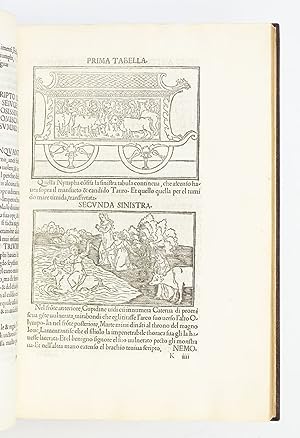
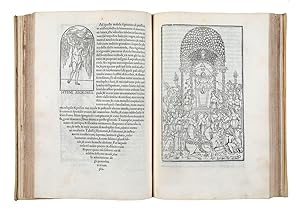
![Bild des Verkäufers für Poliphili hypnerotomachia, ubi humana omnia non nisi somnium esse ostendit, atque obiter plurima scitu sane quam digna commemorat [La hypnerotomachia di Poliphilo, cioè pugna d'amore in sogno]. zum Verkauf von Bernard Quaritch Ltd ABA ILAB](https://pictures.abebooks.com/inventory/md/md31128458528.jpg)
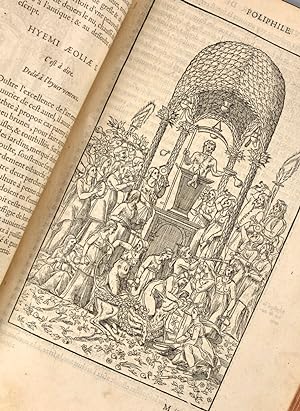
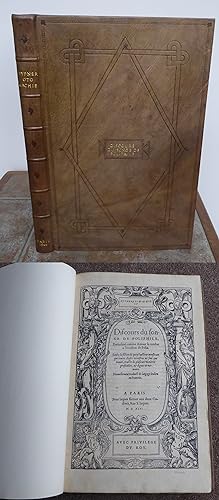
![Bild des Verkäufers für [HYPNEROTOMACHIA POLIPHILI] LE SONGE DE POLIPHILE. OU HYPNERTOMACHIE de Frère Francesco Colonna, Littéralament traduit pour la première fois, avec une Introduction et des Notes par Claudius Popelin. zum Verkauf von Buddenbrooks, Inc.](https://pictures.abebooks.com/inventory/md/md30261395683.jpg)
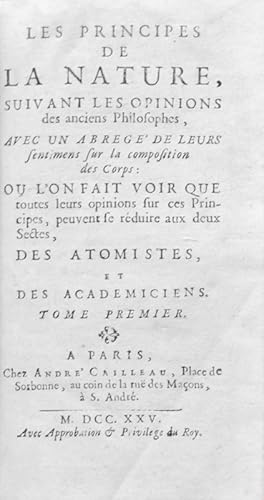
![Bild des Verkäufers für [Bodoni] Songe de Poliphile, Vol I - II zum Verkauf von Leopolis](https://pictures.abebooks.com/inventory/md/md31290075862.jpg)




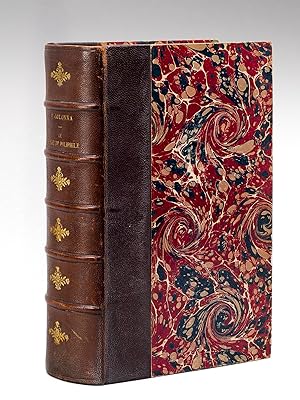
![Bild des Verkäufers für LE SONGE DE POLIPHILE, OU, HYPNÉROTOMACHIE [2 VOLUMES] zum Verkauf von Second Story Books, ABAA](https://pictures.abebooks.com/inventory/md/md31282019559.jpg)

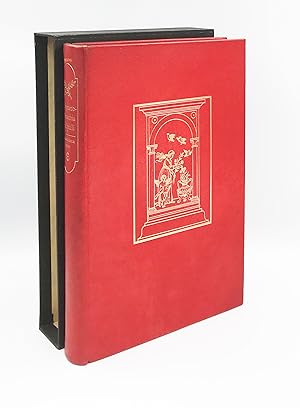
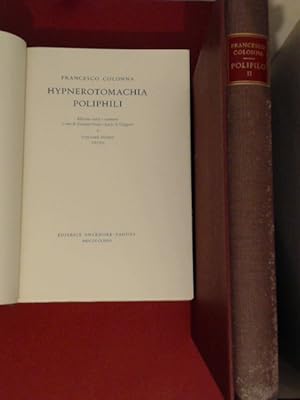

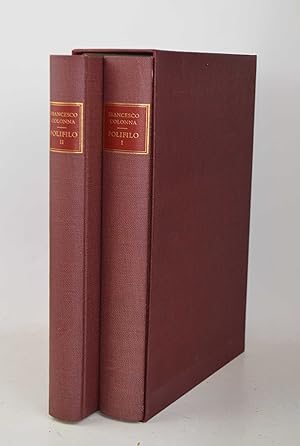


![Beispielbild für Sueno de Polifilo / Polifilo Dream (Spanish Edition) [Paperback] by Colonna, . zum Verkauf von Iridium_Books](https://pictures.abebooks.com/isbn/9788496834033-de-300.jpg)
